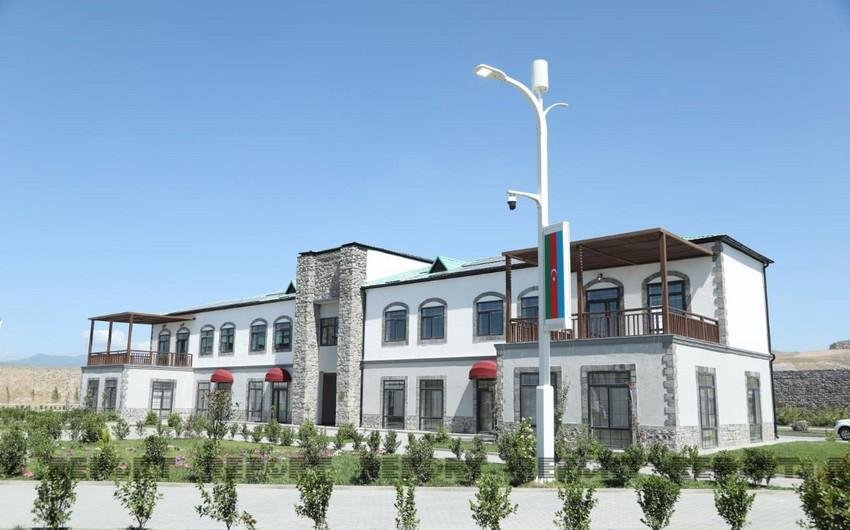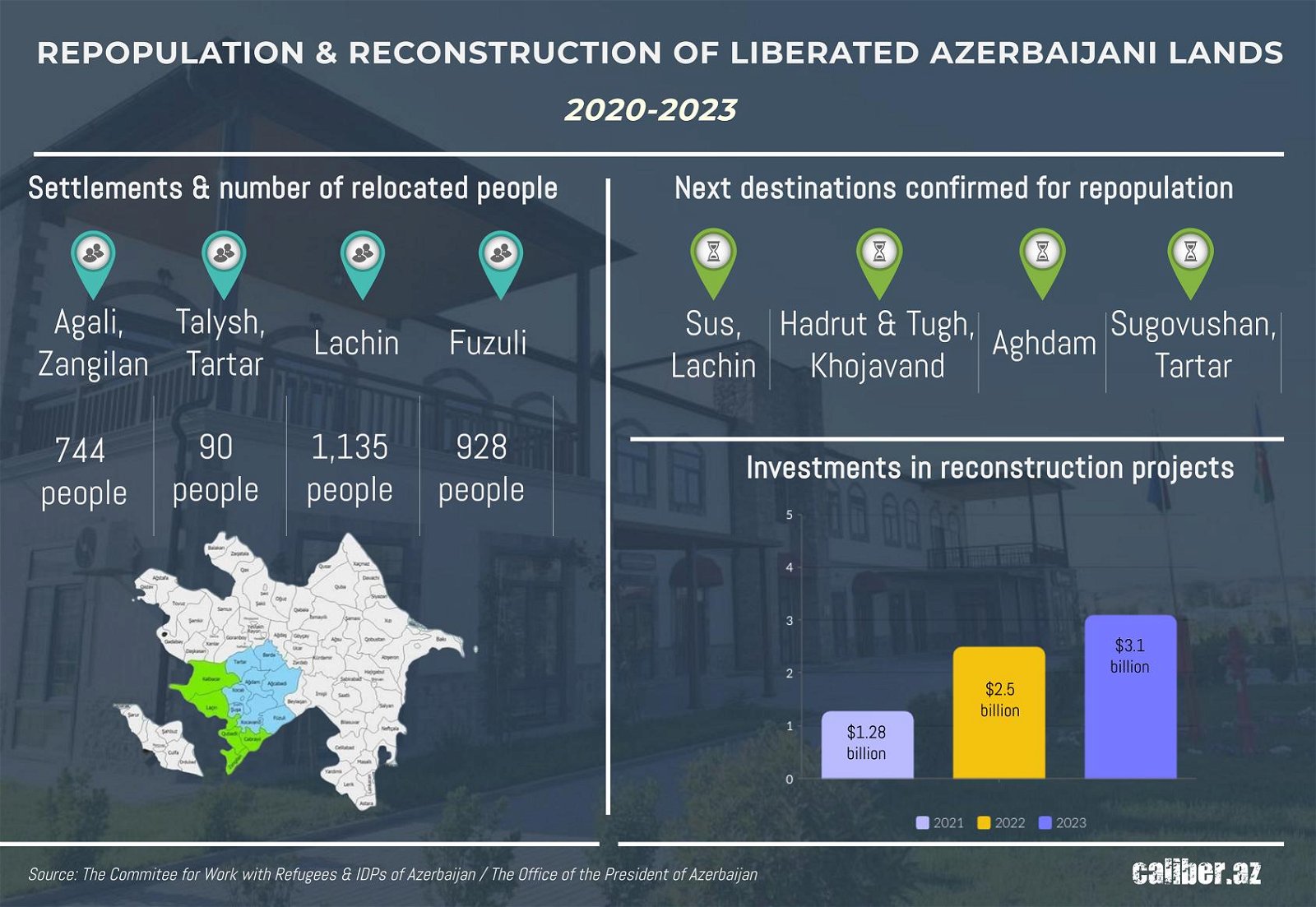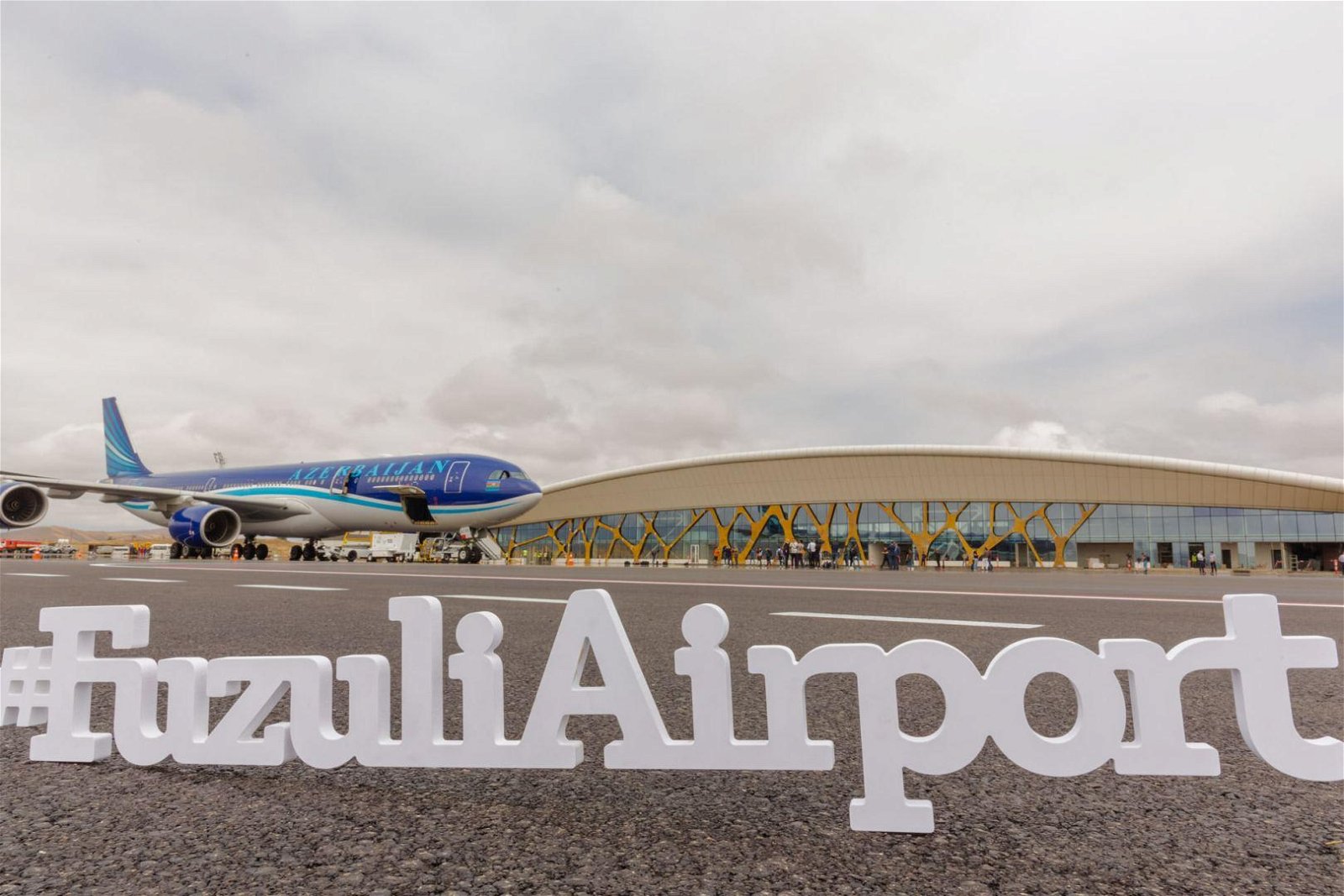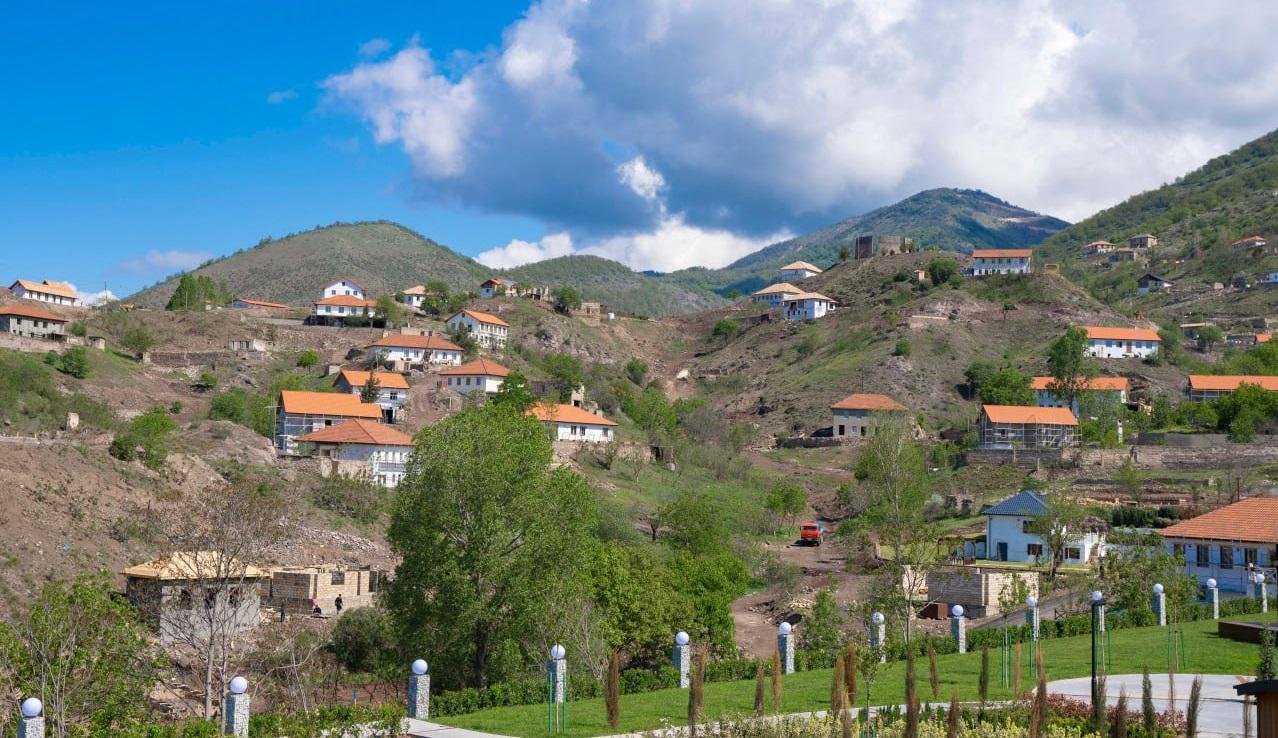Repopulation and reconstruction: Azerbaijan continues reviving liberated lands A lot has been done from 2020 to 2023
The liberated territories of Azerbaijan are rising from the ashes amidst extensive reconstruction and repopulation programs implemented by the government.
The Great Return Program, aimed at the relocation of former IDPs to their permanent residences in these lands, continues in full swing.
On October 26, the next group of Zangilan district’s residents, who were forcibly expelled by Armenia during the First Karabakh War in 1993, returned to the Agali village. Ninety-five individuals from 17 families once lived in the war-torn 1st, 2nd, and 3rd Agali villages relocated to the newly built residential settlement in the village.
Their arrival increased the number of resettled people in Agali to 744 at a time, while more residents are expected to be back in the village once the construction of new residential quarters is completed.
Agali welcomed the first group of former IDPs comprising 96 families on July 19, 2022. The repopulated village is the first settlement in the liberated Azerbaijani lands designed as a “smart village” integrating advanced technologies and eco-friendly features. The village comprises 150 residential buildings, ranging from two to three stories, as well as a kindergarten, school, medical centre, hydroelectric power plant, and other essential facilities. The development of Agali revolves around five key components: housing, production, social services, smart agriculture, and alternative energy.

A view from the Agali smart village in Zangilan
Moreover, Agali hosts several offices, including Azerpost, the ASAN Service multi-purpose social services centre, the DOST social support centre, and the Center for Development of Small and Medium Enterprises. Additionally, an agricultural park is currently under construction in the village.
The Great Return Program, rolled out by the authorities of Azerbaijan shortly after regaining the once-occupied lands in the 44-day war with Armenia in 2020, has so far enabled the return of more than 2,000 expelled Azerbaijanis to their homes.
Since 2022, the former IDPs have been relocated from their temporary residences in various parts of Azerbaijan in the districts of Zangilan, Fuzuli, and Lachin, as well as the village of Talysh in the Tartar district. By the end of 2023, the city of Lachin will also be repopulated and a total of 2,000 people will be resettled in Fuzuli.
As of now, there are 744 people living in Agali, 90 in Talysh, 1,135 in Lachin, and 928 in Fuzuli. According to Baku’s plans, a total of 2,000 families or 10,000 people are expected to return to the liberated territories by the end of 2023. The first-stage completion of the Great Return Program by late 2026 will enable to bring 34,500 families or 140,000 people back to the Karabakh and East Zangezur regions, where 34,500 apartments and private houses will be built to accommodate them.
Post-war reconstruction
The Azerbaijani government has mobilised the financial resources of the country to achieve a speedy reconstruction in the territories devastated during the years of occupation from 1992 to 2020.
The 2023 state budget allocated $3.1 billion, for the ongoing and new reconstruction projects in Karabakh and East Zangazur. However, President Ilham Aliyev confirmed that by the end of this year, the total amount of these investments will hit $7 billion.
In 2022, $2.5 billion, was invested in the revival of the liberated lands. In 2021, the total financial allocations for this purpose stood at $1.28 billion.

The restoration of the civilian infrastructure as part of the efforts to relocate the former IDPs stands out as a priority for Baku. General plans for almost all liberated districts and cities have been confirmed. Residential settlements, social service centres, hospitals, schools, kindergartens, highways, and more have been built or rebuilt, and dozens of relevant projects are currently under construction or planning.
Two new airports have been built in Fuzuli and Zangilan. The third all-new airfield is currently under construction in Lachin. A new road was laid from Fuzuli to Shusha. A highway from the Goygol district to liberated Kalbajar passing through the country’s longest undermountain tunnel is also being built. Almost all of the liberated regions are expected to be interconnected on the new or restored roads, including the Kalbajar-Lachin, Horadiz-Zangilan, Jabrayil-Lachin, Barda-Aghdam, Fuzuli-Hadrut, and others.
The railway infrastructure is also on the rise. The Horadiz-Aghband railroad will form a part of an international multi-modal route reconnecting Azerbaijan’s mainland with the southwestern Nakhchivan Autonomous Republic exclave and further connect to the Turkish railway grid. The Barda-Aghdam rail line is also under reconstruction. A railway connection between Fuzuli and Shusha will be possible on an all-new railroad.
The government of Azerbaijan has been improving also the water management in the liberated territories, which are rich in fertile arable lands. The Sugovushan Water Reservoir in the Tartar district has gone through a major overhaul after its liberation in 2020. The same project has been approved also for the Sarsang Water Reservoir in Tartar. Sarsang was reclaimed on September 20 after the Azerbaijan Armed Forces ousted the formations of the Armenian military and the separatist regime from the country’s Karabakh region.

The all-new Fuzuli International Airport
Over the decades, Armenia and Azerbaijan have been locked in an armed conflict over the latter’s Karabakh (Garabagh) region. Following the Soviet Union’s dissolution in 1991, Armenia launched a military campaign against Azerbaijan. The war ended in a ceasefire in 1994 and saw Armenia forcibly occupying 20 per cent of Azerbaijan’s internationally recognized territories. Over 30,000 Azerbaijanis were killed, 3,890 went missing, and one million were expelled from these lands in a brutal ethnic cleansing campaign carried out by Armenia.
On September 27, 2020, the Armenia-Azerbaijan conflict took a violent turn when Armenia’s forces deployed in occupied Azerbaijani lands shelled military positions and civilian settlements of Azerbaijan. During the 44 days of the war, the Azerbaijani forces liberated over 300 settlements, including the cities of Jabrayil, Fuzuli, Zangilan, Gubadli, and Shusha, from a nearly 30-year-long illegal Armenian occupation. The war ended with the signing of a tripartite statement by Armenia, Azerbaijan and Russia on November 10, 2020. Under the agreement, Armenia also returned the occupied Aghdam, Kalbajar, and Lachin districts to Azerbaijan.

A view from reconstructed Lachin








